|
Advertisement / Annons: |
My astronomy project:
|
Content:
Note: |
1: ZWO ASI 120mm Flash upgradeTo make it more practical when I setup a new astro photographing system I do a complement with a second guide camera. I bought a used ZWO ASI120mm camera, these older cameras has a USB2 standard port. That let me into a big problem, it didn't work with my Raspberry which use Linux as operative system. When reading about it most forum threads says that it's complicated to fix this problem, better to buy the later models with USB3 ports. But I have the camera, why not give it a chance. ZWO ASI120mm camera: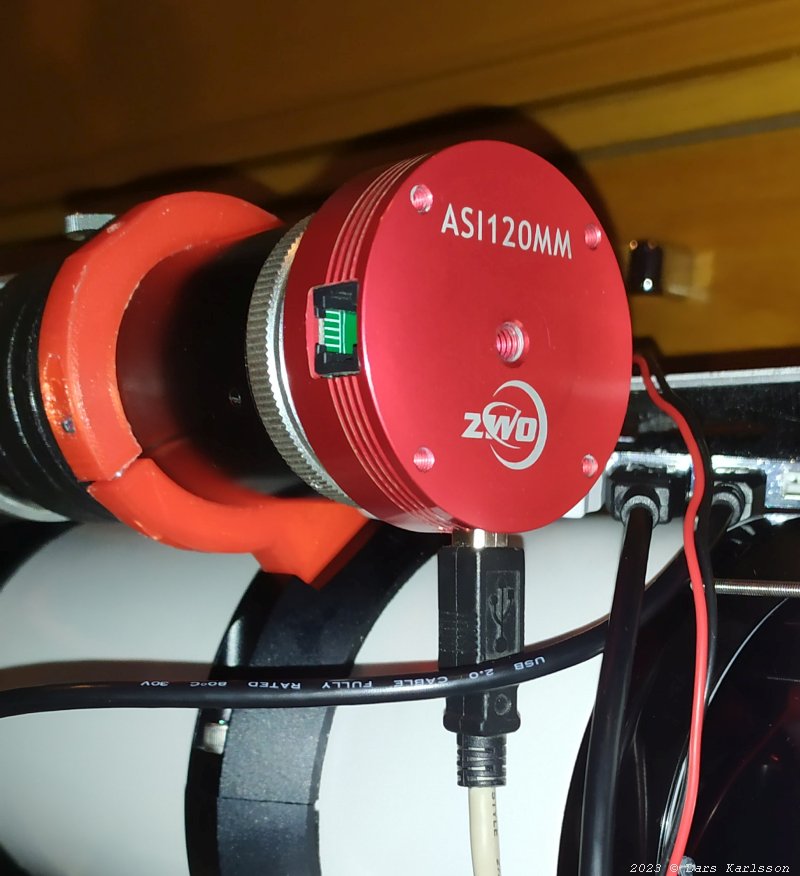
This is how the ASI120 camera looks like. Compact and with a CMOS sensor, 1280x960 pixels resolution, 3.75 square my pixel size. This model is the monochrome version with makes it perfect for use as an auto guiding camera. It has also relative low noise and high sensitivity. Auto guide window in Ekos/KStars: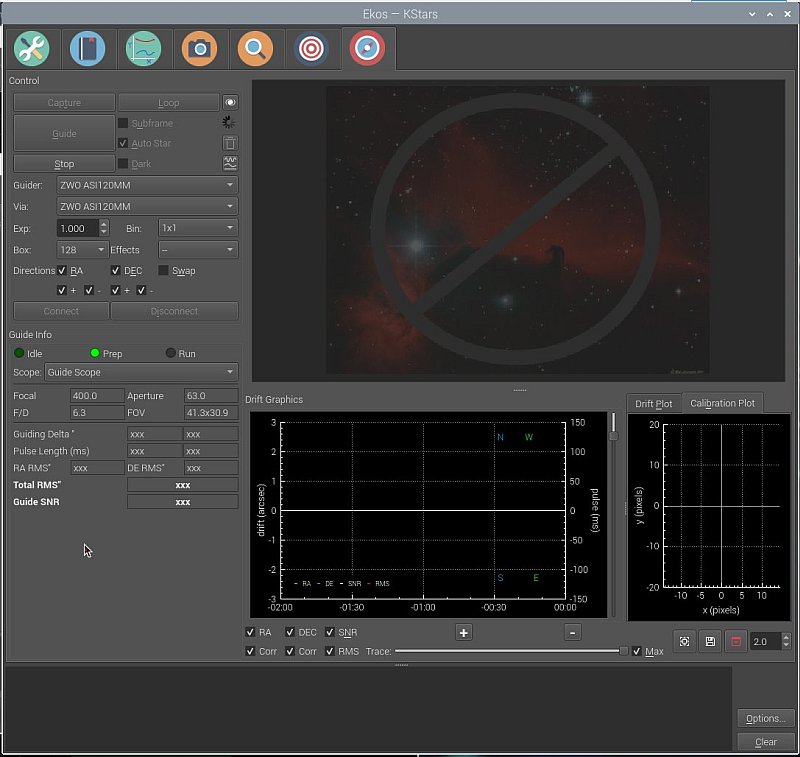
Camera installed on my Raspberry system with Astroberry package, version 2.0.4. Setup for a 400 mm f/6.4 guide telescope. The camera is connected to one of the USB2 port on the Raspberry, no hub between. When I start the Capture nothing happens, it just waiting and waiting to download the image, something is wrong. ASI120 setup: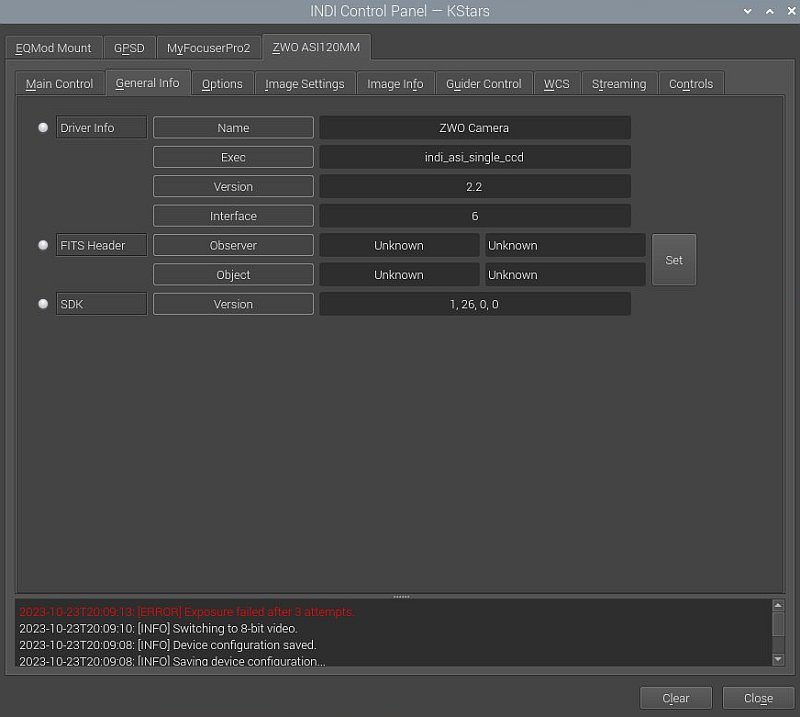
In the INDI's control panel it comes an error message: Exposure failed after 3 attempts. Downloading flash programmer tool: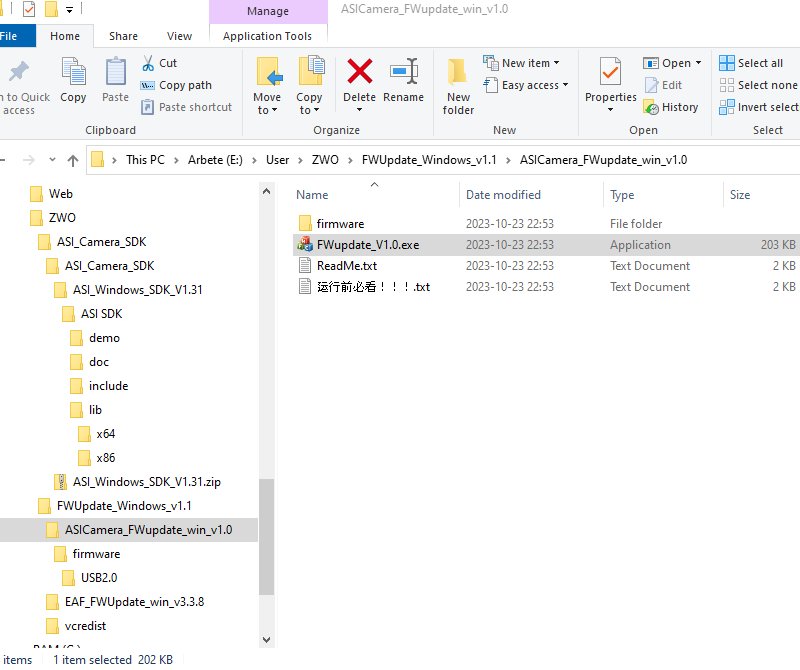
After a lot of reading on the INDI forum and other forums I got some knowledge how it maybe can be fixed. The internal software in the camera is outdated today. There are no perfect solution, it will not be as fast as it once was after this firmware upgrade. That doesn't matter when using it as a guide camera, only at high speed planetary photographing. AT ZWO's homepage there is a flash upgrade tool to download. Note: you must use the windows version, not Linux and do it on a windows machine ! This tool is the FWUpdate_Windows_v1.1. Here on my computer under this folder I find the file to execute. I also downloaded the ASI_Camera_SDK package, but not necessary. The file to upgrade with is under the USB2.0 folder. What you must install on the windows machine you use for the upgrade is the windows driver for the camera. You find these files to download at ZWO's support download page. Windows Camera driver and Firmware upgrade tool. Firmware update: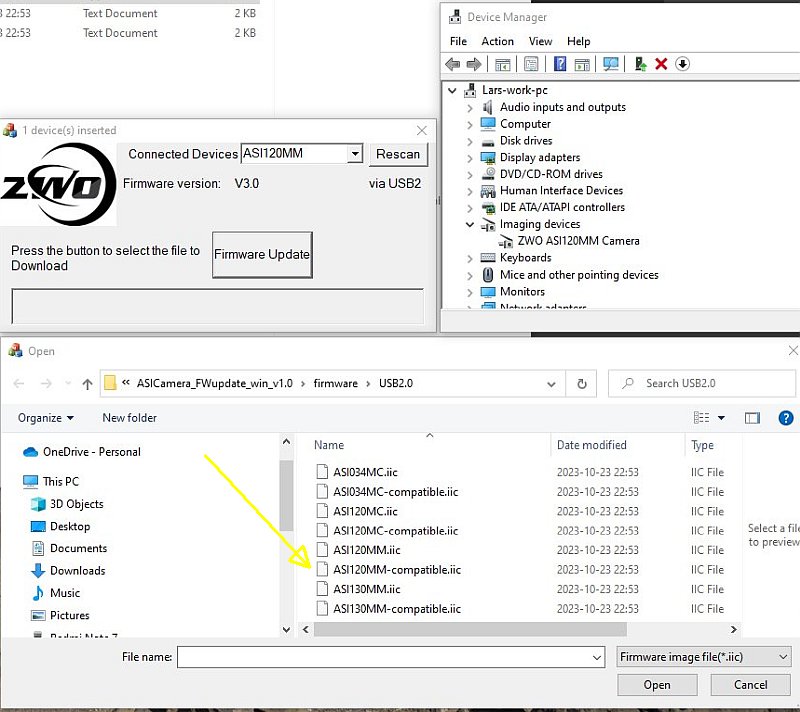
Start the FWUpgrade tool, in the window "Connected devices" the camera should show up. If not, check the windows device manager, if it's not there the camera driver maybe failed to install. It's a Windows 10 machine I use here. With the problem I have to start exposure it is said it belongs to problem with the USB2 port on the camera. The solution is to update the driver to the compatible one, but only if you have problem because it will slow down the camera. And it's not a problem when used on windows machines, only Linux. I could read on the forum's threads that the camera should be installed on a USB2 port, USB3 ports can cause problems. I never got it to work on a USB3 port. Windows driver error:
I got some error messages in the cameras windows driver. But I didn't do anything about that, I will use the camera with Linux on another computer, Raspberry with Astroberry package. Test after upgrade: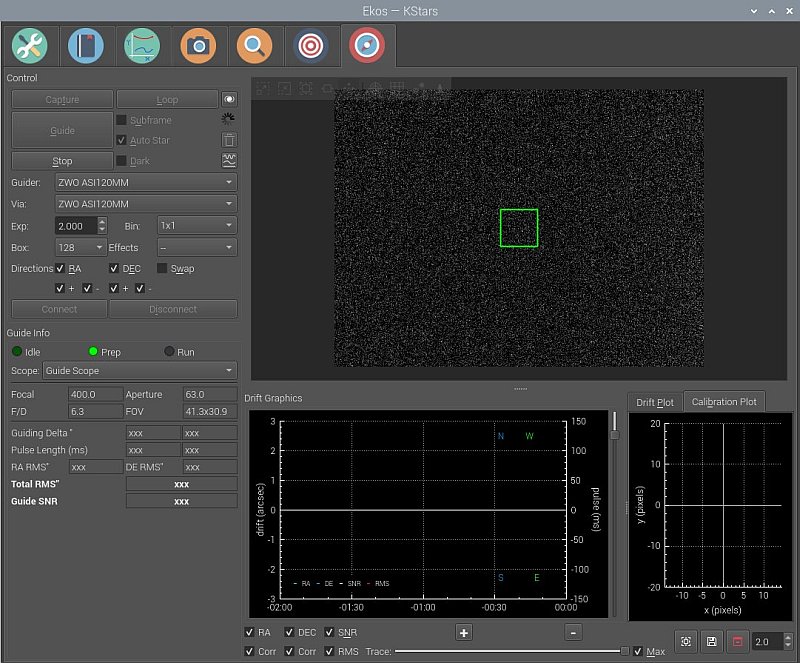
First time I did a test after the upgrade there were no difference, it still got stuck when starting the capture. I redo the firmware upgrade and after some tries I got it to work. It could still be problem, I have read that some people got problem after an hour that the program crashed. I will noticed that when I have the opportunity to guiding under a clear sky. Until I get a clear sky I did a test and let the camera exposure loop with 2 seconds exposures, I tested it for 2+ hours and it worked fine. More, I tried to use the USB3 ports and connect to the camera it didn't. When connected to USB2 ports it sets the bandwidth to default 40. Format is set to raw 8 bit. At later test I noticed it occur a glitch about every 25th exposure, it moves the origin randomly, with the result the image pan around. It could also be problematic to start, many times it do a time out. Even with these problem it guide, the software take care of the glitches.
Update: Fov (Field of view):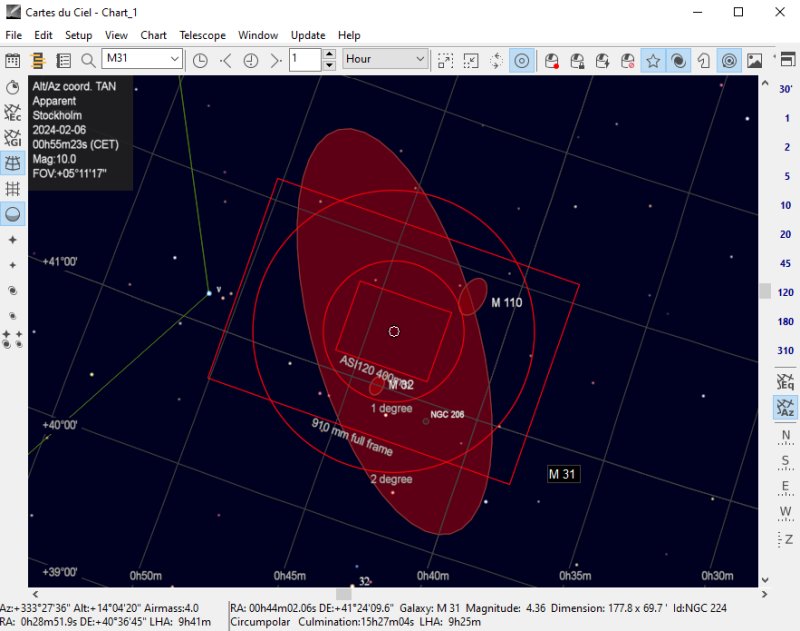
The ASI120mm camera has very small pixels, 3.75y and only 1.2 Mpixel. Above can be seen how big field it cover mounted on a 400 mm guide telescope. Compare it to the main telescope, 910 mm and full frame. In reality the guide telescope is off center. The Galaxy M31 in background. |
|
|